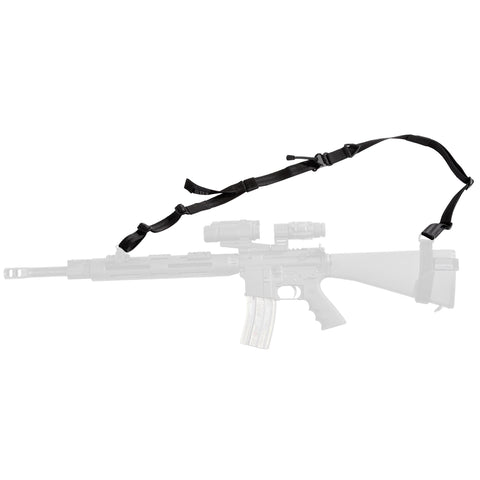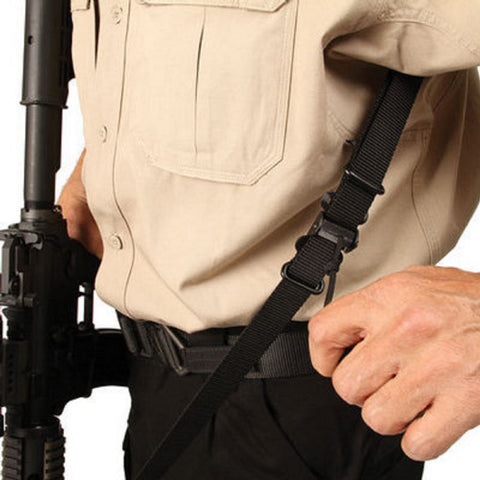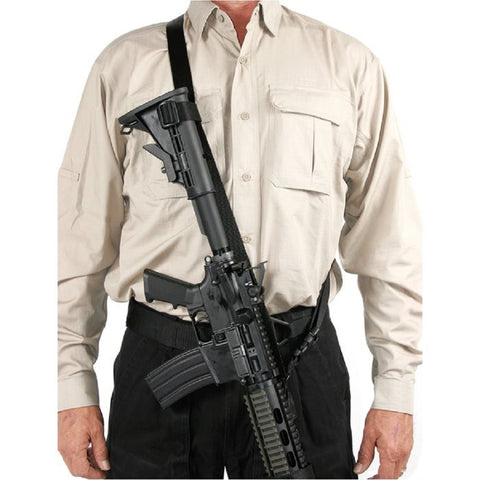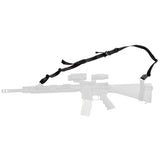
Single- Two- 3-Point Gun-Slings
Single- Two- 3-Point Gun-Slings
If you are a professional rifleman, it is most likely that you are using a good gun-sling to support your rifle handling. Conventional and sports rifles are usually large, and if you have to move from obstacle to obstacle with ease, you would need to have to carry the gun in a way that it is easy to use and with much ease while preventing accident triggers and inconveniences with other tactical gear.
Then a good gun-sling is your friend. It helps you retain the gun as you do other things such as climbing, overcoming obstacles sneaking around with your weapon in combat-ready. There are three major types of gun-slings in the market today, each with its own set of advantages and disadvantages. Your choice of a sling depends on the characteristics of the loop, your preferred weapon, and the way you are used to handling your gun. Here is a quick overview of each of these sling-types. #gunsling #ad
1-Point-Sling / Single-Point-Sling
Single-point slings are used to create a loop, which goes over the head so that the strap goes on the strong side shoulder (right-handed marksman, the right shoulder) and then runs diagonally across your torso under your weak arm (right-handed marksman the left arm). They then attach to the buttstock your weapon with a carbine and have a quick-release device (buckle) on the receiver side of the attachment. A proper mounting is required at the carbine so that the sling attaches correctly. It is the traditional Sling and a popular rifle and submachine gun sling in armed forces or police.
Find Slings and Lanyards in our Collection:
With this type of gun sling, the carbine is always front-oriented and centered on the chest-hight of the body. That makes it easy for the rifleman to grip the gun straight from its resting position, low-ready, and engage the opponents. That ensures that the marksman is combat-ready at any time. It is ideal for use in the fire-fight in tightly packed areas light in housings or by dismounting from the combat-vehicle when the gun should be usually always battle-ready.
Apart from making the gun easy to carry and remove the weapon, it also allows one to switch the rifle or SMG from one shoulder to the other (transition). Most of the slings do not come with an adjustable length feature. Therefore, you have to pick a gun sling that fits your body, weapon, and equipment correctly.
Pros
The gun-sling allows the rifleman to keep the gun in a combat-ready position at all times as it is always pointed forward and across the center of the body. In fact, in the military field, most urban warfare specialists prefer this kind of sling as it allows them to handle the gun swiftly.
It is also easy to change your shoulders (transition), remove the sling, and put it back on your weapon. It has a simple but effective design that warriors around the world find practical when carrying the gun across the combat field. Given that they will be wearing other tactical gear such as protective vests, the sling will not get in their way when moving about.
Cons
On the flip side, you have to hold your gun most time in a place as it dangles freely in the front. That may not be a comfortable position to carry the gun for longer times, especially when marching or if you need both hands free for working.
The dangling gun can interfere with movement, knock your thighs and knees or dip with the muzzle in the ground as you move.
The Sling does not allow for weight distribution across the body. So, one body side gets more fatigued as the other.
At the bottom line, single-point gun-slings are mostly recommended for Submachine Guns and short rifles like the M4 or HK G36C.
2-Point-Sling / Two-Point-Sling
Two-Point-Slings are also a popular sling-style used with sports and combat weapons these days. They differ from the traditional two-point slings in that they come with a fast adjustment buckle, loop, or some other kind of mechanism to allow riflemen to adjust the sling length quickly. There are two classic attachment points to the gun, one at the front and the other at the buttstock. One of the attachments can come with a quick detach buckle, should the user need to remove the Sling. However, just like the traditional two-point slings, some loop or hook may be required for mounting.
These types of slings can be worn in two ways. You can wear the gun in the short-position tightly in front of the body or on the back. So both hands are free for other tasks and the weight ist contributed over the full upper body.
In the wide-position of the sling, the weapon can be handled with ease in low-ready and ready.
Most marksmen use two-point slings as useful shooting aids. Given that they allow for quick adjustment, it is easy for the user to effortless and rapidly snug the gun tight against the body and brace the rifle such a way that he or she can shoot in a stable position. That can help to create a more accurate shot. Yet other users wrap their support arm around the slings forward connection point, thereby pulling the weapon against the shoulder. This style is excellent for engaging far away targets in the prone-position.
Pros
The two-point Sling allows you to access the weapon with ease when you have to use it in a moment notice. Given that it is either facing the ground or across the body, engaging your opponent is a lot easier when the enemy appears out of the blues.
The sling offers a stable shooting platform in that one can adjust the length of the sling so and support the stock of the weapon. It provides excellent support for, particularly long rifles.
It is easy to move fast, when not using the gun as it does not keep hitting the lower parts of the body, also the hands can be free for other tasks.
Cons
Despite not hitting the lower part of the body, it still does not offer great freedom of movement as it is worn with the short-configuration of the sling.
It can be tricky to transition your weapon from one shoulder to the other without having to stop for some time and to adjust the Sling with one hand.
The slings with quick-adjust buckle, which, although effective, can be complicated sometimes, making it hard for use or to adjust the sling when you want to stabilize the weapon and engage your target.
We recommended two-point-slings for long rifles like the M16 or HK G36 (standard version).
3-Point-Sling
A three-point-sling is a hybrid of single- and two-point-sling. It comes with a loop, which you put over your head and across the dominant arm, just like a single-point sling. The tail of the loop connects near the stock of your weapon while the third point connects to the front of the weapon like the 2-point Sling. It looks a little complicated but has significant advantages over the two other types of slings.
Some of the things that three-point slings do well include securing rifle to your body and keeping the weapon in position as you move around. Then, it allows you to transition to several carry positions with relative ease than the other two types of slings.
You can carry the rifle with a closed buckle like a two-point-sling tightly in front of the chest or on the back with hands-free. With opened buckle, you can handle the rifle like with a one-point-sling in all gun-positions.
However, many inexperienced weapon carriers may have a hard time operating the 3-point-sling. They may end up getting tangled in the slings when trying to wear or change shoulders. In the worst-case scenario, they may immobilize the weapon when they need it most. Most of the slings come with quick-release buckles. However, there are cases when the buckle hangs and fails to release from the weapon when the buckle-button is pressed.



